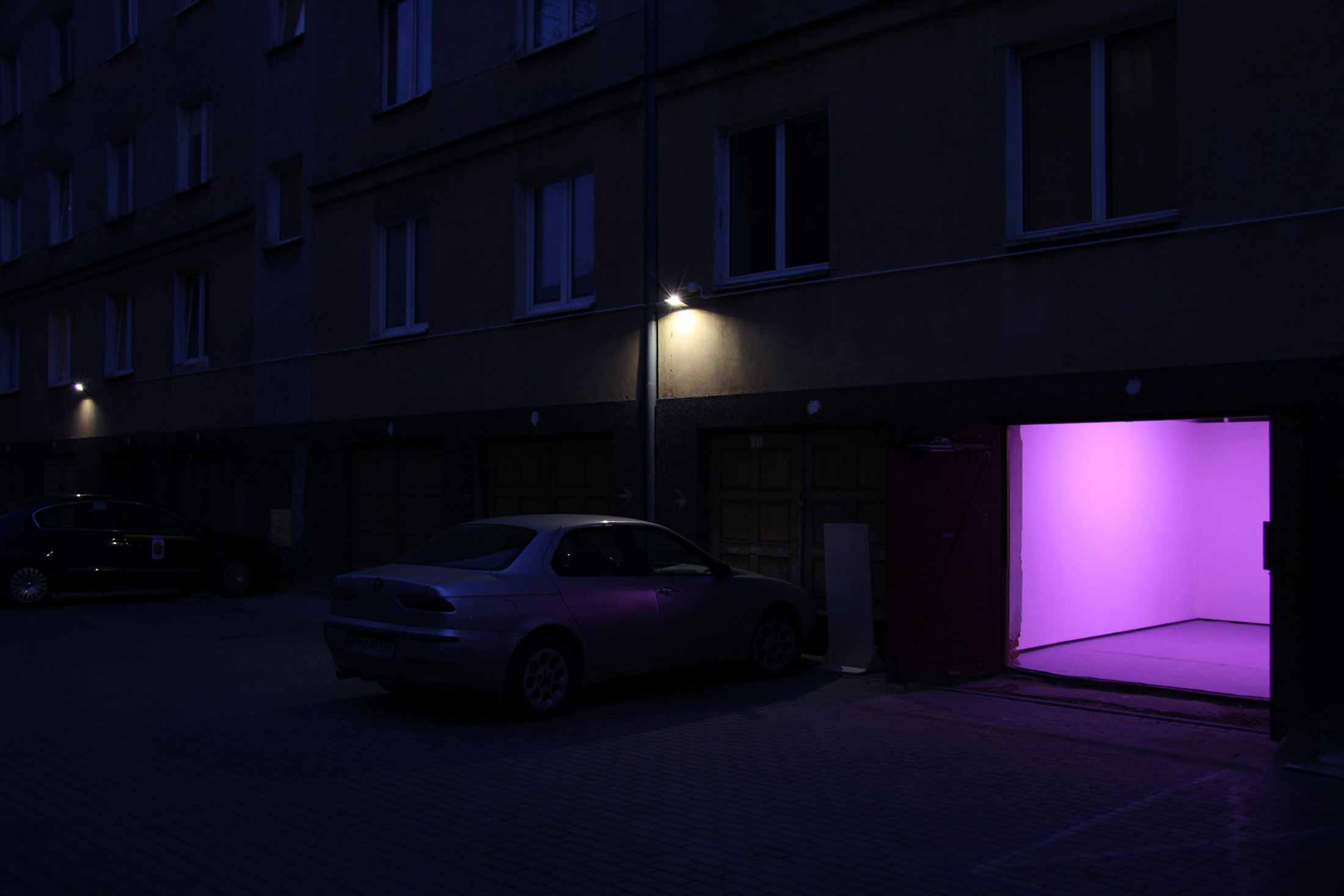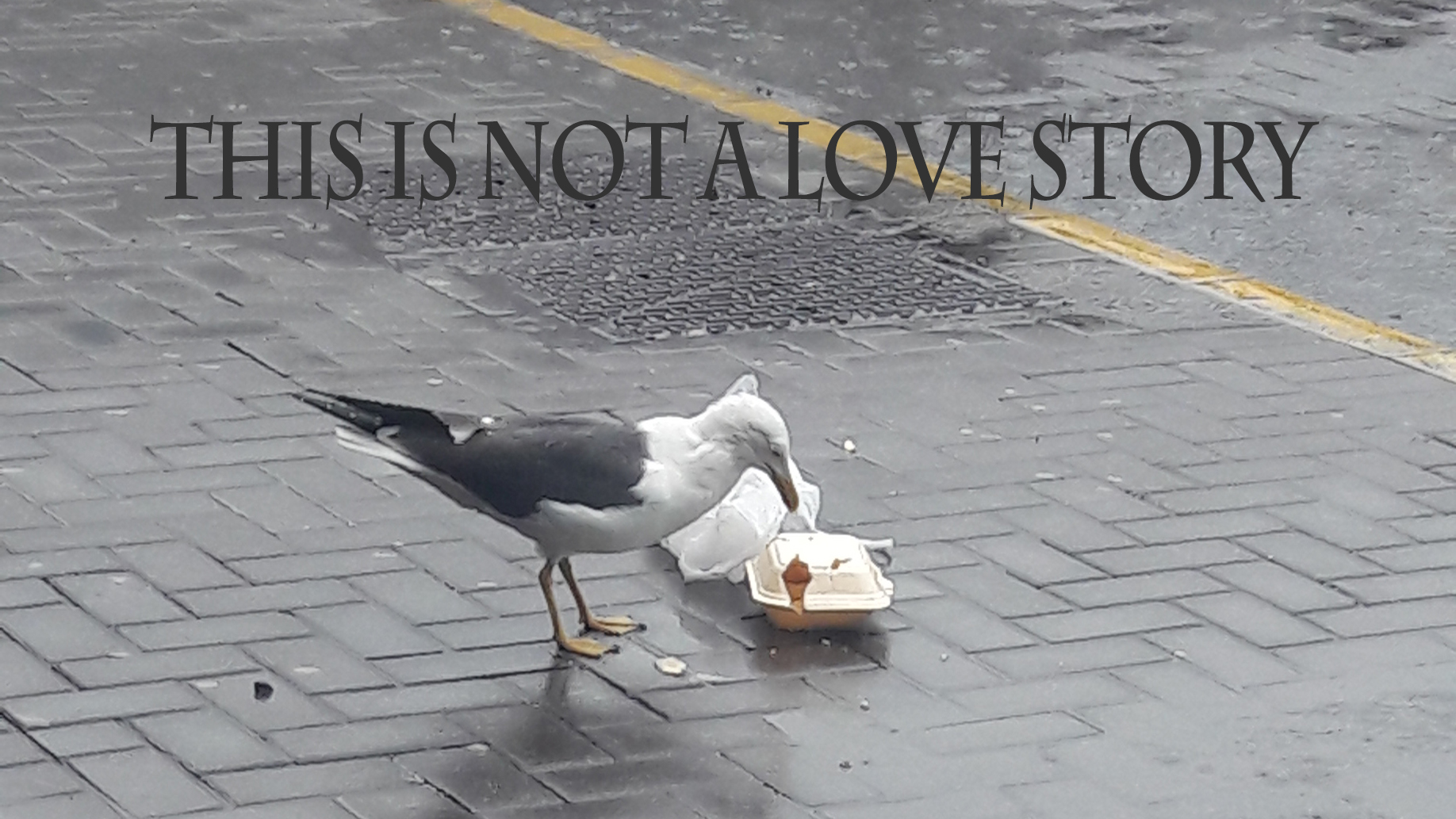Olga Dziubak
This Is Not a Love Story | 17.03.2018
Performance, Love&anarchism mixtape | 05.04.2018







audio visual installation: speakers, purple colour light 10000K, carpet
CURATOR: Piotr Policht
“[Mary Wollstonecraft] had been in revolt all her life – against tyranny, against law, against convention. The reformer’s love of humanity, which has so much of hatred in it as well as love, fermented within her,” as one of the godmothers of feminism, Virginia Woolf, wrote about her. “Every day she made theories by which life should be lived; […] Every day too – for she was no pedant, no cold-blooded theorist – something was born in her that thrust aside her theories and forced her to model them afresh.” The final idea of how to live life is brought to Wollstonecraft by life itself, when she meets the writer and philosopher William Godwin. This was not long after a failed suicide attempt inspired by her previous, less successful relationship. Wollstonecraft develops a sense of accomplishment and new deposits of reform. The daughter of Wollstonecraft and Godwin, Mary Shelley, in love with the poet Percy Shelley, escapes from their house at the age of 17. The author of Frankenstein writes her most famous novel in Switzerland, where she lives with Shelley and meets Lord Byron. In his house, a group of friends makes time pleasant by inventing dreadful stories.
The stories collected by Olga during her year-long stay in Northern Ireland, compiled as the audio drama And Obsessions Will Disappear, are the tales of migrants, of holiday residence affairs at the Venice Biennale, of love borne over smoking cigarettes at a pub, of people trying to anchor in a new place. The heroes flounce like the characters from Zadie Smith’s books and face dilemmas like the ones experienced by the protagonists of Damien Chazelle’s La La Land. It is a story lacking a moral, showing a universal pursuit for a sense of settling down and closeness, but without universal answers. We may not be touched by the tales of some strangers’ unsuccessful romances, but from those stories emerges precisely an acute feeling that in fact, regardless of our social position and the idea of the self, most things are primarily decided by blind luck anyway. And when luck seems to be favorable, something can always get fucked up. Like in the case of Mary Wollstonecraft, who, after finding the plan for her life, died during childbirth.
Olga on This is Not a Love Story
audio from installation: https://soundcloud.com/blackprotest/and-obsessions-will-disappear
video from performance Love&anarchism mixtape: https://vimeo.com/264846744
(PL)
„Mary Wollstonecraft była buntowniczką – występowała przeciwko tyranii, przeciwko prawu, przeciwko konwenansom. Wrzało w niej reformatorskie uczucie ku ludzkości, w którym zawiera się równie dużo nienawiści, co miłości”, pisała o jednej z matek chrzestnych feminizmu Virginia Woolf. „Codziennie stwarzała teorie dotyczące tego, jak należy żyć (…). Codziennie też – nie była bowiem pedantką, zimnokrwista teoretyczką – rodziło się w niej coś, co kazało jej odrzucić poprzednie teorie i formułować je na nowo”. Ostateczny pomysł na to, jak należy żyć przynosi Wollstonecraft samo życie, kiedy poznaje pisarza i filozofa Williama Godwina. Niedługo zresztą po nieudanej samobójczej próbie wieńczącej poprzedni, mniej udany związek. Wollstonecraft znajduje poczucie spełnienia i nowe pokłady reformatorskich sił. Córka Wollstonecraft i Godwina, Mary Shelley, ucieka z domu w wieku 17 lat zakochana w poecie Percym Shelleyu. Autorka Frankensteina pisze swoją najsłynniejszą powieść w Szwajcarii, gdzie zamieszkuje z Shelleyem i poznaje Lorda Byrona. W jego domu grono przyjaciół umila sobie czas wymyślając na poczekaniu straszne historyjki.
Historie zebrane przez Olgę podczas rocznego pobytu w Irlandii Północnej, składające się na słuchowisko And Obsessions Will Disappear, to opowieści migrantów, historie wakacyjnych rezydencyjnych romansów na biennale w Wenecji, miłości rodzących się na papierosie pod pubem, opowieści ludzi szukających zakotwiczenia w nowym miejscu. Bohaterowie miotają się jak postaci z książek Zadie Smith i stają przed dylematami w rodzaju tych przeżywanych przez protagonistów La La Land Damiena Chazelle’a. To opowieść bez morału, pokazująca uniwersalną pogoń za poczuciem zadomowienia i bliskości, ale bez uniwersalnych odpowiedzi. Mogą nas nie ruszać historie nieudanych romansów obcych ludzi, dojmujące jest za to precyzyjnie wyłaniające się z nich poczucie, że w gruncie rzeczy, niezależnie od pozycji naszej pozycji społecznej i pomysłu na siebie, o wszystkim i tak decyduje głównie ślepy traf. A gdy ten wydaje się sprzyjać, zawsze coś może się spierdolić. Jak u Mary Wollstonecraft, która po znalezieniu planu na życie zmarła w połogu.